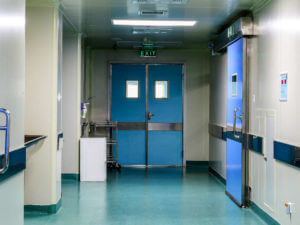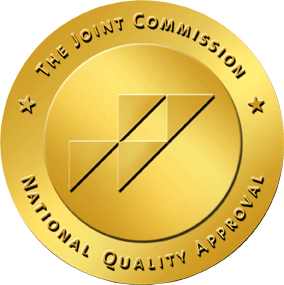Body Dysmorphic Disorder Causes

The most common areas of concern with people who have this disorder include:
- Skin problems- wrinkles, scars, acnes or other skin blemishes
- Features with the face or skin- most likely involving the nose or other skin features that include size or shape
- Hair- head or body hair or could include the loss of hair
- Body Weight- obsession with body size or muscle tone
Risk Factors
There are no known Body Dysmorphic Disorder Causes or BDD: but there are certain factors that may contribute to why someone has the disease. Factors that increase the risk for BDD include:
- Having a relative or family member with BDD or obsessive-compulsive disorder
- Life experiences that caused a negative impact such as childhood trauma, teasing or other abuse
- Being a perfectionist
- High expectations of beauty to meet social norms
- Anxiety or depression
*Inherited disease-*There have been small studies that show that there is a genetic component to having BDD. A study showed that of all the BDD cases about 8% had a family member who also suffered.
Obsessive-compulsive disorder- Often someone suffering from BDD also has OCD or a relative who has OCD. One study found that among people who suffer from BDD 8-37% also suffer from OCD. Treatment for BDD can also be used for OCD.
Features of the brain or other visual processing disorders-In a 2004 study, it was found that when people did tasks such as drawing, those with BDD focused more on distortions or other mistakes from the drawing.
Body Dysmorphia Disorder
We live in a world that is obsessed with the way we look but what happens when the way we think we look takes over our life?
Let’s talk about BDD, Body Dysmorphic Disorder. What is it? How do we know we have it, and what do we do about it? Body Dysmorphic Disorder or BDD is a mental disorder in which you can’t stop thinking about one or more perceived effects or flaws in your own appearance. A flaw that to others they may never know is there. Not noticeable at all!
But to someone with BDD it could be so extreme and obvious that they feel ashamed and anxious and avoid social situations because of it. BDD share some of the features with eating disorders and obsessive-compulsive disorders but not the same. It’s not an eating disorder. And this is where we make the distinction. BDD is similar to eating disorders in that both involve a concern with body image.
However a person with an eating disorder worries about weight and the shape of the entire body while a person with bdd is concerned about a specific body part or a specific flaw. Acne, scars, hair, veins or vascularity, redness or cellulite on the body, can be some areas of fixated for someone with BDD. Say someone is fixated on the look of their hair or skin. They might spend hours in the mirror obsessing over a scar or blemish. Maybe they are even late to work because of how long they are spending focusing on that area putting makup on it making it just right.
This can be problematic because it can greatly impact your life as you compare yourself to others hide or undergo risky surgeries or treatments that change the way you look.
So what do we do about it? What do we do if we have BDD?
If any of this sounds familiar, talk with a supportive family member or friend. Speak with your doctor about your concerns and seek out help from your therapist and dietitian It might feel like these things will never change but we can shift this and we can make peace with our body and our appearance.
Low levels of serotonin- There has been research around low levels of serotonin among people with BDD, although it is not clear if it is related. People with BDD can be treated with serotonin reuptake inhibitors or SSRI’s and it has been known to help with the negative Body Dysmorphic Disorder symptoms associated with BDD.
Childhood experiences- One study found that people who have negative childhood experiences such as abuse, trauma or teasing will later develop BDD. Having a higher expectation for beauty or appearance at a young age can also contribute.
Symptoms of BDD
The following criteria can be used to determine if someone has BDD:
- Obsessing over a body part or imperfection in appearance that other people may not notice
- Continuously checking mirrors, touching or changing the appeared flaw and comparing themselves to others
- Avoiding social situations or events because of fear of looking bad in front of other people
- Low self-esteem
- Anxiety or depression
- Only focusing on the flaws and unable to think about other things
- Compulsive behaviors such as frequently changing clothes or skin picking
- Hiding flaws with clothing, styling or medical procedures to change them
Typical Areas of Concern
- The nose
- The mouth
- The teeth
- The genitals
- The breasts
- Hair loss
- Skin issues such as acne, greasiness, blemishes or wrinkles
- The face such as unwanted facial hair
Rates of BDD
In the United States the rates among people suffering from BDD are 2.5% of males and 2.2% of females and it mostly develops during the adolescent stage of life.
Many of the cases of BDD go undiagnosed because people do not want to admit that they have a problem or feel shame for how they are feeling.
Treatment for BDD
*Medications-* Serotonin reuptake inhibitors or SSRI’s, or well-known antidepressants have been known to help with decreasing the negative symptoms that are associated with anxiety, depression or obsessive-compulsive disorder.
Cognitive Behavior Therapy- There are several steps to this type of therapy that include:
- A person is asked to participate in social situations and not cover up the perceived flaw or issue that they have with their appearance.
- Therapy helps the person find healthy coping strategies to deal with the emotions around their negative appearance or flaws. If there is compulsive behavior present, then a therapist can help develop strategies to overcome this behavior.
- Through counseling or therapy a person can learn to feel better about themselves and worry less about the perceived issue with their appearance allowing them to create healthier behaviors.
Plastic Surgeons and BDD
People suffering from BDD will often get plastic surgery done in order to change their appearance in a positive way and get rid of their flaws. Surgeons are required to be trained and educated on the criteria for diagnosing BDD in order to help people who they see in their office.
Most of cosmetic professionals who have been surveyed were familiar with BDD and the criteria used to diagnose it. Also, all of them had encountered 1-5 patients over the years that they had been practicing. From one study, it found that BDD is present in about 2% of the general population and accounts for 10% of people seeking cosmetic procedures.
Recover from BDD In Los Angeles
Body dysmorphia is a condition that is no less painful than any other mental health illness. Those who have it are often experiencing a number of other symptoms underneath the guise of being perfect, such as low self-esteem, pervasive sadness, feeling emotionally drained, and suicidal thoughts. However, our body dysmorphia treatment in Los Angeles can offer those individuals the opportunity to get in control of their behaviors in ways that support their positive mental health.
If you are struggling with body dysmorphia, know that you are not alone. About 1 in 50 people in the United States have this condition, as it is extremely pervasive. But you do not need to remain trapped in your dysmorphia. You can make the changes you need to live happily.
Do not wait. Reach out to our caring professional staff today to learn more about our Los Angeles body dysmorphia treatment program.












